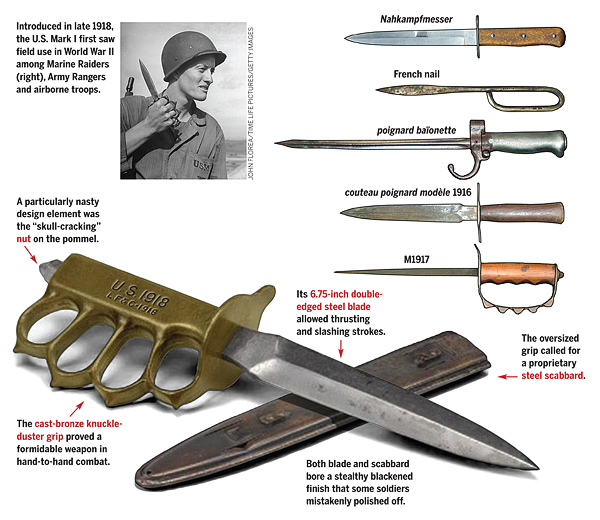
Opposing army units on the Western Front often livened up the quiet spells with trench raids, usually to snatch prisoners for interrogation. These prompted development of specialized close-quarters weapons, epitomized by the trench knife.
Originally handmade, early trench knives included the German Nahkampfmesser (“close combat knife”), a 6-inch, single-edged steel blade with a wooden slab grip and metal sheath, as well as the crude “French nail,” fashioned from a steel barbed-wire stake, its blunt end heated and bent into a handle. Also popular among the poilus was the poignard baïonette (“dagger bayonet”), a stiletto-like stabber with a cruciform blade, cut down from a standard Lebel M1886 bayonet. Replacing it was the double-edged couteau poignard modèle 1916, popularly known as the Avenger, which added a steel knuckle guard.
When the American Expeditionary Forces entered the trenches, its troops carried the M1917 trench knife, based on the French type but with a triangular blade. A metal knuckle guard curved down from the blade to the pommel. It proved unwieldy, though, and within months gave way to the M1918, with a modified knuckle-duster grip. Soldiers still found the design limiting.
Then came the definitive American trench knife, the Mark I, designed by a board of AEF officers. Similar to the French couteau poignard, it boasted a full tang, double-edged blade with a cast-bronze hilt, a knuckle-duster grip and a skull-cracking conical nut on the pommel. Issued too late for frontline service in World War I, it saw use in World War II by airborne troops, Army Rangers and Marine Raiders.




